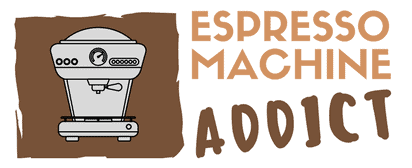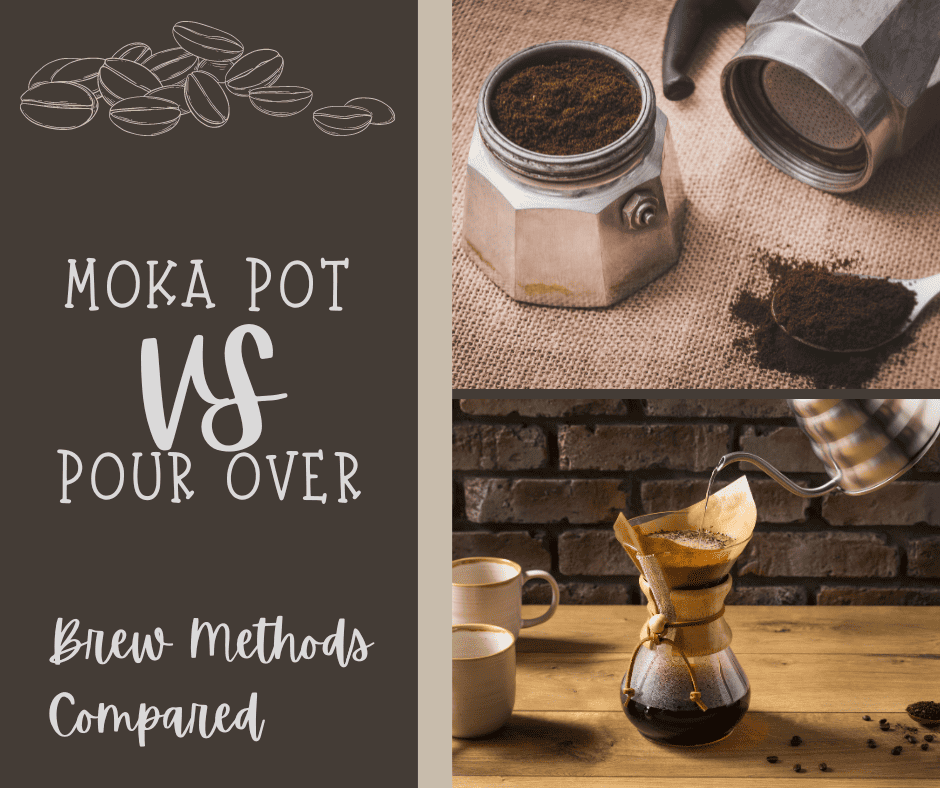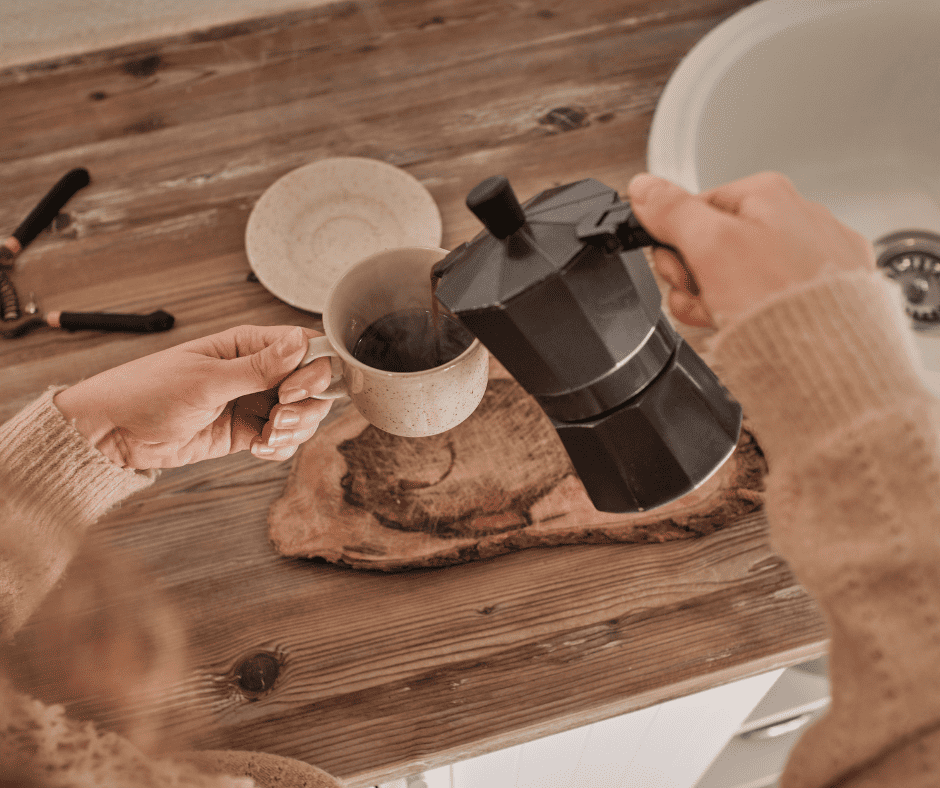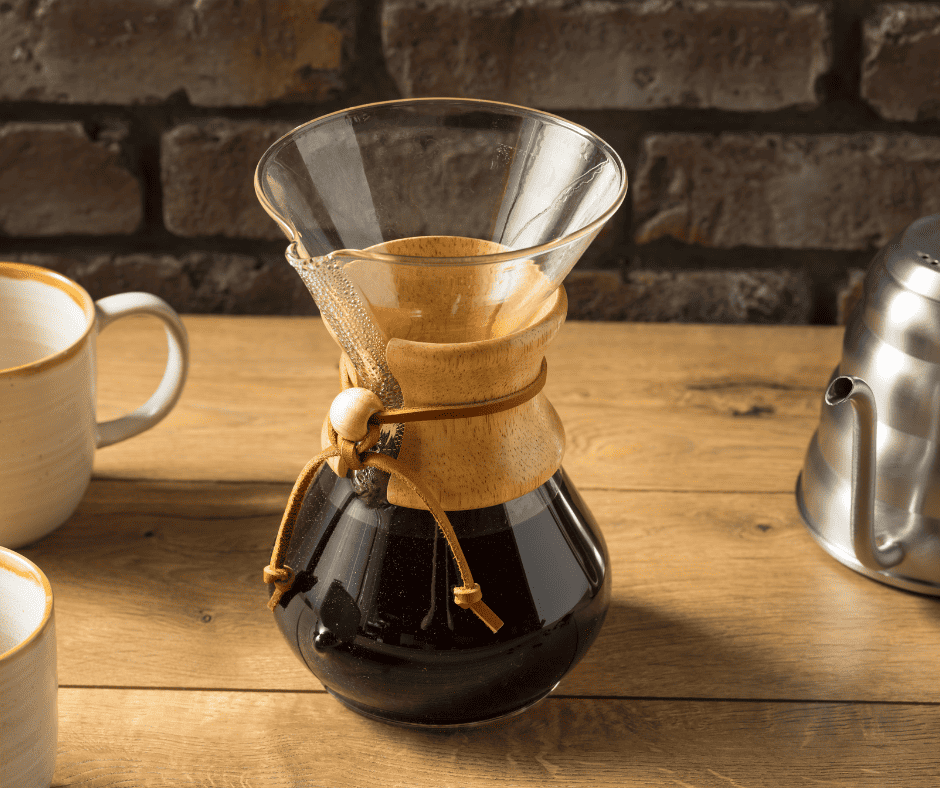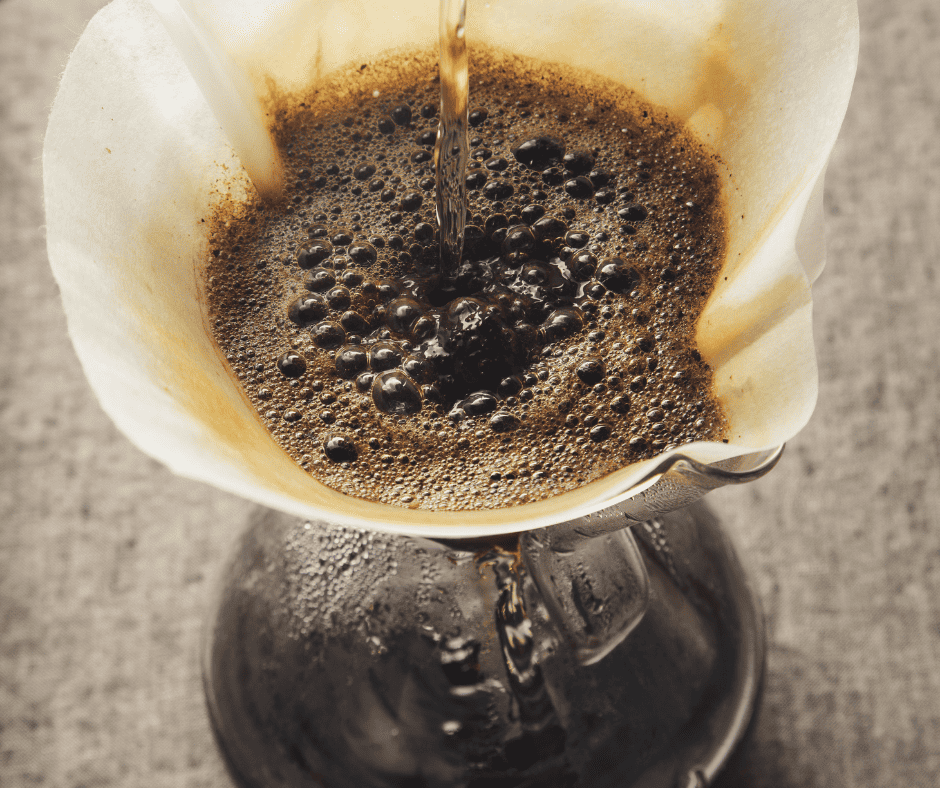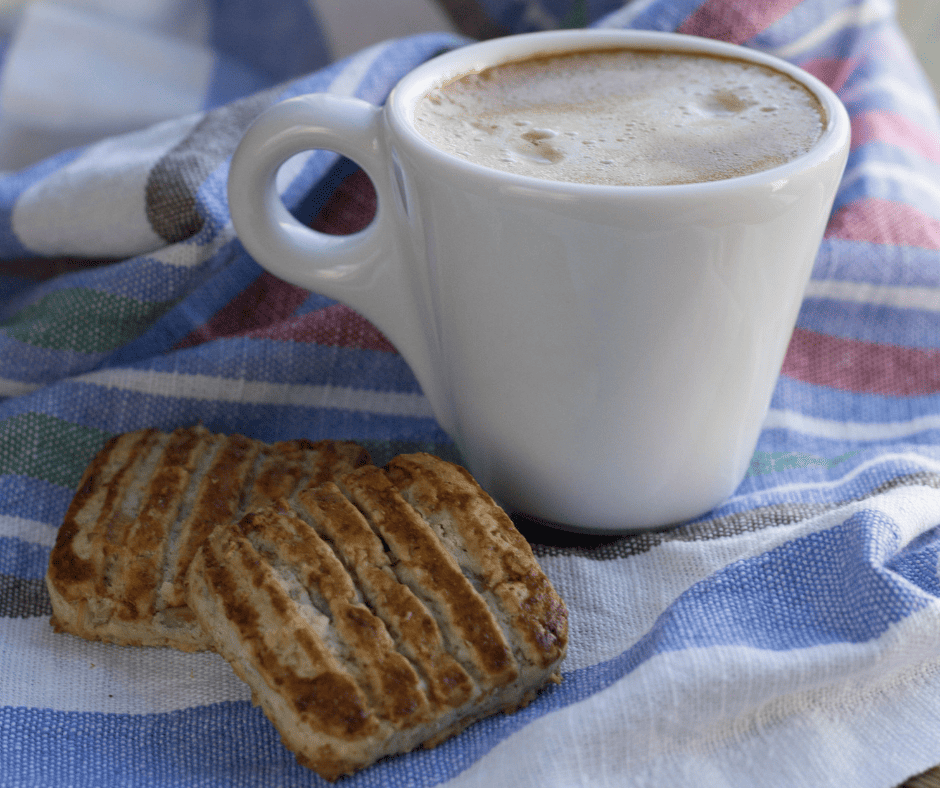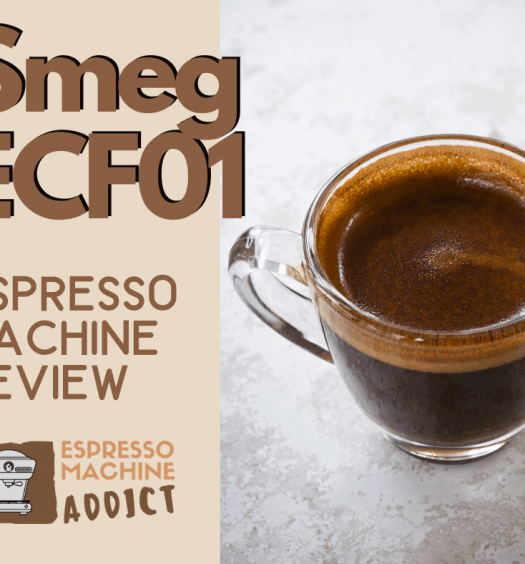For many people, an exceptional cup of coffee isn’t just an occasional pleasure; it’s a daily necessity. As a result, coffee enthusiasts often compare and contrast different brewing methods looking for the ideal solution. You may find yourself debating Moka pot vs. pour-over coffee if you’re among them.
Both Moka pot and pour-over brewers use distinctly different brewing methods. Making coffee with these methods requires more involvement than just using an automated machine. Additionally, the resulting flavors are often incredibly unique. As a result, many coffee lovers find that one approach suits them better than the other. If you aren’t sure which one to try, here’s a closer look at Moka pot vs. pour-over coffee.
What Is Moka Pot Coffee?
Moka pot coffee is a method for getting rich, concentrated coffee flavor at home. Often, the result is an espresso-like coffee, though it isn’t quite as intense overall. It relies on the Moka pot, an Italian stovetop coffee brewer that harnesses the power of steam to extract decadent flavors from fine coffee grounds. This allows coffee enthusiasts to brew coffee anywhere without needing special accessories, making it a quicker and convenient option compared to other brewing methods.While Moka pot coffee is espresso-like, whether you want to use an espresso roast or similar dark roast coffee beans can vary. With darker roasts, the result may be a bit more intense than you intended or lead to a higher degree of bitterness. As a result, you may want to start your Moka pot journey with a medium-dark roast and make adjustments based on your results and personal coffee preferences.
How Does a Moka Pot Work?
The Moka pot brewing method, similar to that of a stovetop espresso maker, relies on a combination of heat and pressure from steam to create coffee with a highly concentrated flavor. Typically, it requires finely ground coffee, which is placed in a filter basket. Steam pressure rises from a lower chamber through the grounds, and the resulting coffee is collected in the upper chamber.
Overall, the brewing process with a Moka pot takes five to seven minutes. However, the amount of effort is minimal, as the Moka pot does all the work.
Once it’s done brewing, you do need to wait a bit for the coffee to cool before drinking it. Otherwise, it may be hot enough to cause burns.
Advantages of Moka Pot Coffee
- Rich, concentrated flavor
- The resulting coffee is suitable for espresso coffee drinks
- Easy to use
- No water preheating
- Only uses one device
Disadvantages of Moka Pot Coffee
- More challenging to clean
- Less control over the result
What Is Pour-Over Coffee?
Generally, a medium to medium-coarse grind works well for pour-over coffee. Since paper filters are commonly used, you also avoid issues like sediment and excess oils, resulting in a cleaner overall flavor.
Once the brewing process ends, you can potentially drink the brewed coffee right away. As a result, this option can work well for anyone who prefers to avoid additional wait time.
How Does a Pour-Over Work?
The pour-over method is reasonably simple but a bit more involved than Moka pot coffee. First, you place the coffee grounds in a filter in the upper section of the pour-over carafe. Then, you heat water in a kettle to get the correct water temperature and slowly pour it over the grounds in the filter. The hot water then works its way through the grounds, and coffee is collected in the lower section of the carafe.
The goal is even water dispersion to ensure proper saturation. Often, pour-over coffee requires a lot of control to achieve the best flavor, but the result often makes it worthwhile. And the total time required is similar to Moka pot coffee, but the increased handling does mean more work is involved.
Advantages of Pour-Over Coffee
- Extract subtle flavors
- Easy to clean
- Cleaner flavor
- Exceptional amount of control
- Usually ready to drink once brewing is complete
Disadvantages of Pour-Over Coffee
- Requires a separate kettle
- Higher learning curve to get the proper amount of control
Equipment and Techniques
Moka Pot Equipment
A Moka Pot is a stovetop coffee maker that consists of three main components: the lower chamber, the filter basket, and the upper chamber. The lower chamber is where the water is placed, the filter basket holds the coffee grounds, and the upper chamber is where the brewed coffee collects. Moka Pots are typically made of aluminum or stainless steel and are available in various sizes. This classic design has made the Moka Pot a staple in many households, offering a simple yet effective way to brew rich, concentrated coffee.
Pour Over Equipment
A Pour Over coffee maker, on the other hand, consists of a cone-shaped dripper and a carafe or mug. The dripper is placed on top of the carafe or mug, and the coffee grounds are placed in the filter. Pour Over equipment can be made of various materials, including glass, ceramic, or plastic. This variety allows coffee enthusiasts to choose a setup that best fits their aesthetic and functional preferences. The simplicity of the Pour Over design belies the level of control it offers, making it a favorite among those who appreciate a hands-on brewing experience.
Pour-Over vs Moka Pot
While neither the pour-over method nor Moka pot coffee requires any electric appliances, the two brewing methods are incredibly different. The resulting coffee flavors are usually nothing alike, meaning some people prefer one approach while others enjoy the other more.
Understanding how the two differ is essential if you’re trying to choose between Moka pot vs. pour-over coffee. Here’s a closer look at how they vary based on coffee taste and strength and the grind you’ll want to use.
Coffee Taste and Strength
When it comes to the coffee taste and strength, there are distinct differences in what you get when using a Moka pot vs. pour-over coffee. Generally, a Moka pot produces coffee similar to espresso, though it’s not quite as strong and lacks crema. Ultimately, it’s richer than what you get with pour-over coffee.
With pour-over coffee, the result is lighter, but the longer extraction time leads to subtle flavors you might otherwise not capture. It’s easier to experience the various flavor notes, often bringing out the uniqueness of your coffee beans.
The Grind of the Coffee Beans
When it comes to how you grind the coffee beans, you’ll use a different grind depending on whether you’ve got a Moka pot or a pour-over coffee carafe. You typically want a fine grind with a Moka pot, not quite as fine as what you’d use for espresso. That allows the steam to rise through the freshly ground coffee easily, resulting in the rich flavor you likely hope to achieve.
A medium or medium-coarse grind is typically the better choice for pour-over coffee. It allows for better flavor extraction when using this brewing method, leading to a wide array of clean but subtle notes without excess intensity. Plus, it provides room for the water to work its way through the grounds at the right speed, ensuring it doesn’t flow too quickly or slowly.
FAQs: Pour-Over Coffee vs Moka Pot
Why Choose the Moka Pot?
Using a Moka pot lets you get an espresso-like coffee without the need for an espresso machine. As a result, it’s a lower-cost alternative for those who appreciate a more intense and richer flavor than you get with many other home-brewing coffee methods.
Plus, a Moka pot is easy to use. All you need is a stovetop and the Moka pot, and you’re on your way toward a full-bodied coffee experience that you typically can’t capture with alternative brewing methods. Often, the resulting coffee can be strong enough to work in various espresso drinks, too, allowing you to create café-style beverages without needing extra appliances.
Why Does My Pour-Over Taste Sour?
Typically, pour-over coffee can seem sour if the brewing time is too short. The extraction process is long, so you must wait to ensure the pour-over brewing method captures the sweetness to create a balanced cup.
In some cases, sour-tasting coffee can also occur if the grind you’re using is too coarse. This can technically happen with drip coffee, too, so consider adjusting the fineness of the coffee grinds to capture a sweeter flavor.
Which Has More Caffeine Moka Pot or Pour-Over?
If caffeine content is a priority, the Moka pot is a go-to option. While Moka pot coffee has less caffeine than espresso, it offers more than you get with other brewing methods, including pour-over and classic drip.
Why Do Italians Use Moka Pot?
Italians (along with many Europeans) use the Moka pot for several reasons. First, there’s a general preference for small, decadent cups of coffee, making the lighter versions typically created with other home methods – like drip and pour-over – less appealing. Second, the Moka pot has long been a part of Italy’s coffee culture, as it allowed them to get café-style results at home. Approximately 70 to 90 percent of Italian households have a Moka pot in their kitchen.
Why Is a Moka Pot Better?
Technically, a Moka pot isn’t necessarily better or worse than other brewing methods. Instead, it creates a different coffee experience, and the results are something that some – but not all – coffee drinkers prefer.
A Moka pot is better for coffee lovers that appreciate rich, decadent coffee than alternatives like drip coffee machines or pour-over coffee makers. Plus, it’s less expensive than an espresso machine. But the Moka pot might not be the best fit for anyone who prefers a lighter, more delicate coffee.
Is Pour-Over Better Than Moka Pot?
Just as a Moka pot isn’t technically better or worse than other brewing methods, pour-over coffee isn’t inherently better or worse than a Moka pot. Instead, it depends on what you consider an exceptional cup of coffee. If you prefer a gentler experience with clean, subtle flavors, pour-over coffee is potentially right up your alley. However, a Moka pot is possibly the better choice if you favor a rich experience or want to make café drinks at home.
